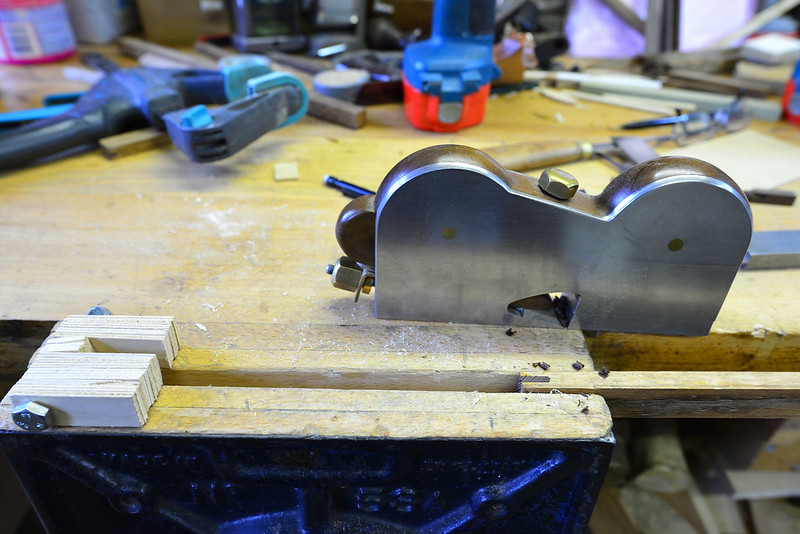Ttrees
Iroko loco!
Hello folks
Got the chance to do a bit of metalwork for the next few days, and I fancy making a start at a shoulder plane build.
I'm thinking something along the lines of the older Preston ones that use a wooden wedge.
I think I will use regular mild steel plate, as I probably have something thicker than, say 4mm(ish)
stock which I will be using for the sides.
I am going to dovetail the sides but I see some other things that look like they could be welded.
Has anyone hade a WIP on this ?
I am curious on traditional construction of this kind of plane, and have a few questions
The early Preston and similiar seem to be cast, but I have seen the term gunmetal used often...
Point I'm getting at (badly) is.... there must be the handmade way for making it in the same style...
I was hoping Bill Carter would make some videos on using mild steel for planes, before I got around to it....
as I have a few planes in mind
Maybe someone could give me some info, or links on the topic, or point me in the right direction for the questions I have.
Dovetail angle... guessing its a 1 in .... (fill in blank)
Recommended thickness of sole using mild steel, and at what bedding angle?
The ends of the plane... are they dovetailed into the sides, welded, or both?...
Come to think about it, are the dovetailed sides welded too?
What about the connecting piece the wedge bears against... guessing this is dovetailed into the sides?
I have other questions about peining ...
Is it a regular drilled hole or is there a small countersink for the mushrooming ?
What metal to use for the job, where to get it easily, do I need a blowtorch?
Thanks
Sorry about the amount of questions
Tom
Got the chance to do a bit of metalwork for the next few days, and I fancy making a start at a shoulder plane build.
I'm thinking something along the lines of the older Preston ones that use a wooden wedge.
I think I will use regular mild steel plate, as I probably have something thicker than, say 4mm(ish)
stock which I will be using for the sides.
I am going to dovetail the sides but I see some other things that look like they could be welded.
Has anyone hade a WIP on this ?
I am curious on traditional construction of this kind of plane, and have a few questions
The early Preston and similiar seem to be cast, but I have seen the term gunmetal used often...
Point I'm getting at (badly) is.... there must be the handmade way for making it in the same style...
I was hoping Bill Carter would make some videos on using mild steel for planes, before I got around to it....
as I have a few planes in mind
Maybe someone could give me some info, or links on the topic, or point me in the right direction for the questions I have.
Dovetail angle... guessing its a 1 in .... (fill in blank)
Recommended thickness of sole using mild steel, and at what bedding angle?
The ends of the plane... are they dovetailed into the sides, welded, or both?...
Come to think about it, are the dovetailed sides welded too?
What about the connecting piece the wedge bears against... guessing this is dovetailed into the sides?
I have other questions about peining ...
Is it a regular drilled hole or is there a small countersink for the mushrooming ?
What metal to use for the job, where to get it easily, do I need a blowtorch?
Thanks
Sorry about the amount of questions
Tom


























































